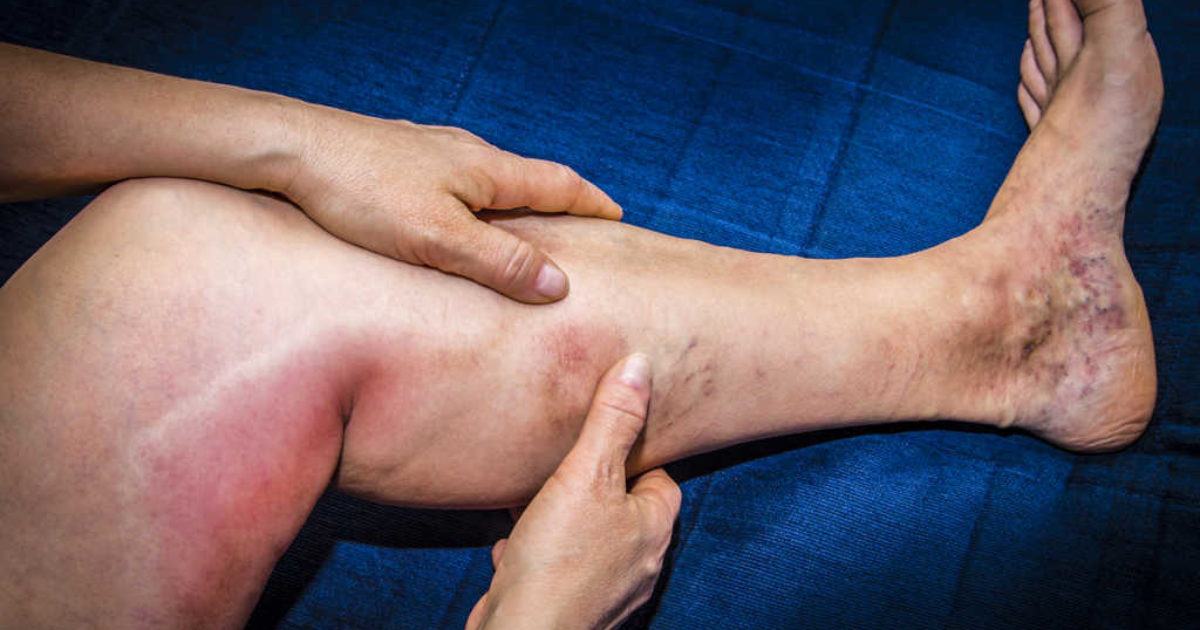Infections - Prevention, Diagnosis & Treatment
Deep Vein Thrombosis
By D.A. (staff writer) , published on October 30, 2020

Medicine Telehealth Health Deep vein thrombosis
Deep vein thrombosis (DVT) occurs when a blood clot (thrombus) forms in one or more of the deep veins in your body, usually in your legs. Deep vein thrombosis can cause leg pain or swelling, but also can occur with no symptoms.
Deep vein thrombosis can develop if you have certain medical conditions that affect how your blood clots. It can also happen if you don't move for a long time, such as after surgery or an accident, or when you're confined to bed.
Deep vein thrombosis can be very serious because blood clots in your veins can break loose, travel through your bloodstream and lodge in your lungs, blocking blood flow (pulmonary embolism).
Symptoms
Deep vein thrombosis signs and symptoms can include:
Swelling in the affected leg. Rarely, there's swelling in both legs.
- Pain in your leg. The pain often starts in your calf and can feel like cramping or soreness.
- Red or discolored skin on the leg.
- A feeling of warmth in the affected leg.
Deep vein thrombosis can occur without noticeable symptoms.
Causes
The blood clots of deep vein thrombosis can be caused by anything that prevents your blood from circulating or clotting normally, such as injury to a vein, surgery, certain medications and limited movement.
Risk factors
Many factors can increase your risk of developing deep vein thrombosis (DVT). The more you have, the greater your risk of DVT. Risk factors include:
- Inheriting a blood-clotting disorder. Some people inherit a disorder that makes their blood clot more easily. This condition on its own might not cause blood clots unless combined with one or more other risk factors.
- Prolonged bed rest, such as during a long hospital stay, or paralysis. When your legs remain still for long periods, your calf muscles don't contract to help blood circulate, which can increase the risk of blood clots.
- Injury or surgery. Injury to your veins or surgery can increase the risk of blood clots.
- Pregnancy. Pregnancy increases the pressure in the veins in your pelvis and legs. Women with an inherited clotting disorder are especially at risk. The risk of blood clots from pregnancy can continue for up to six weeks after you have your baby.
- Birth control pills (oral contraceptives) or hormone replacement therapy. Both can increase your blood's ability to clot.
- Being overweight or obese. Being overweight increases the pressure in the veins in your pelvis and legs.
- Smoking. Smoking affects blood clotting and circulation, which can increase your risk of DVT.
- Cancer. Some forms of cancer increase substances in your blood that cause your blood to clot. Some forms of cancer treatment also increase the risk of blood clots.
- Heart failure. This increases your risk of DVT and pulmonary embolism. Because people with heart failure have limited heart and lung function, the symptoms caused by even a small pulmonary embolism are more noticeable.
- Inflammatory bowel disease. Bowel diseases, such as Crohn's disease or ulcerative colitis, increase the risk of DVT.
- A personal or family history of deep vein thrombosis or pulmonary embolism. If you or someone in your family has had one or both of these, you might be at greater risk of developing a DVT.
- Age. Being older than 60 increases your risk of DVT, though it can occur at any age.
- Sitting for long periods of time, such as when driving or flying. When your legs remain still for hours, your calf muscles don't contract, which normally helps blood circulate. Blood clots can form in the calves of your legs if your calf muscles don't move for long periods.
Prevention
Measures to prevent deep vein thrombosis include:
-
Avoid sitting still. If you have had surgery or have been on bed rest for other reasons, try to get moving as soon as possible. If you're sitting for a while, don't cross your legs, which can hamper blood flow. If you're traveling a long distance by car, stop every hour or so and walk around.
If you're on a plane, stand or walk occasionally. If you can't do that, exercise your lower legs. Try raising and lowering your heels while keeping your toes on the floor, then raising your toes with your heels are on the floor.
- Make lifestyle changes. Lose weight and quit smoking.
- Exercise. Regular exercise lowers your risk of blood clots, which is especially important for people who sit a lot or travel frequently.
References
Find articles related to: Medicine Telehealth Health Deep vein thrombosis
More articles about Infections - Prevention, Diagnosis & Treatment
Back to the Health Tips Index




